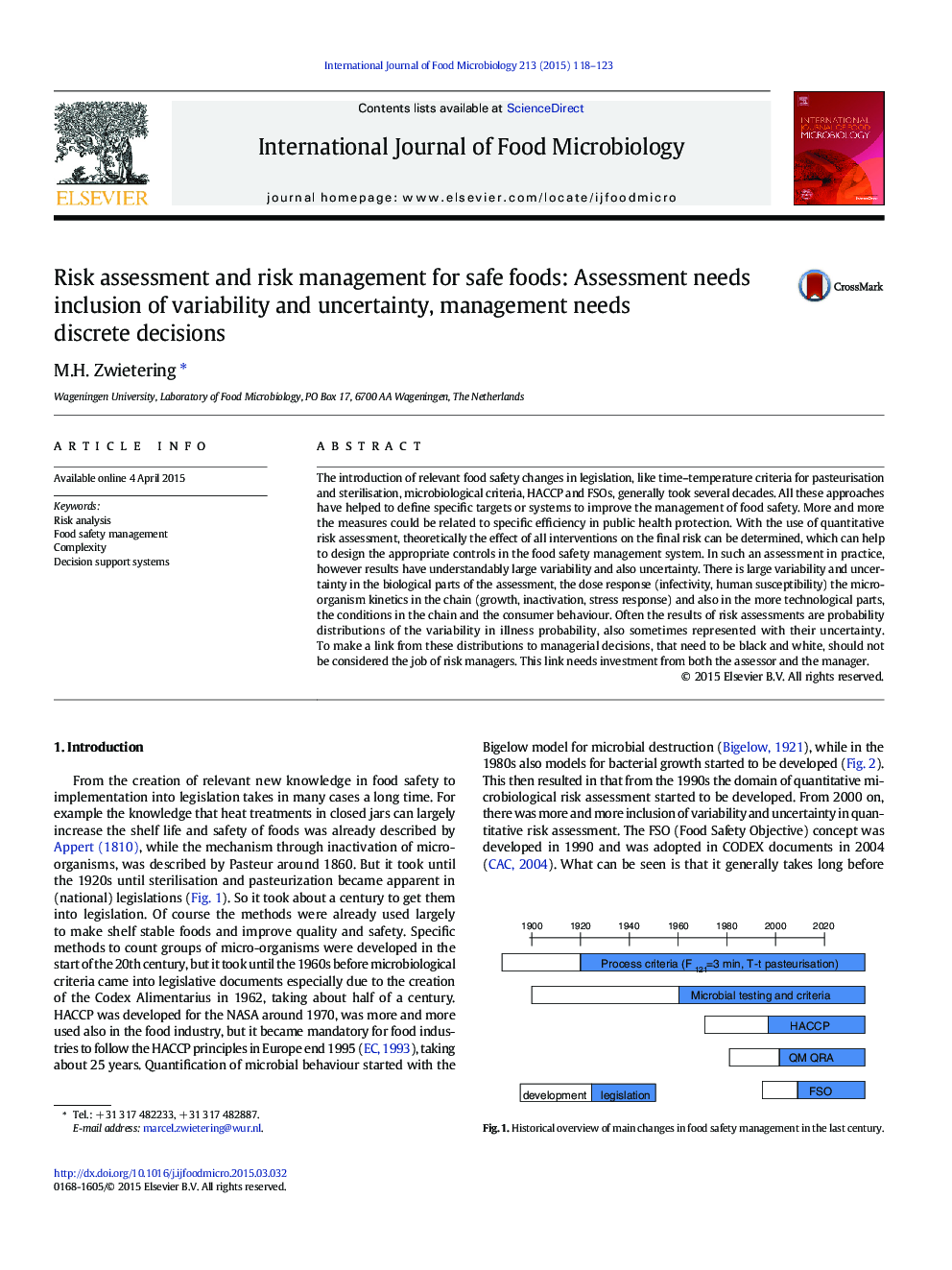| Article ID | Journal | Published Year | Pages | File Type |
|---|---|---|---|---|
| 6289871 | International Journal of Food Microbiology | 2015 | 6 Pages |
â¢For risk assessments inclusion of complexity, variability and uncertainty might be needed for being realistic.â¢For risk management, specific decisions need to be taken.â¢To connect risk assessment and risk management, assessors and managers need to better link to each other.
The introduction of relevant food safety changes in legislation, like time-temperature criteria for pasteurisation and sterilisation, microbiological criteria, HACCP and FSOs, generally took several decades. All these approaches have helped to define specific targets or systems to improve the management of food safety. More and more the measures could be related to specific efficiency in public health protection. With the use of quantitative risk assessment, theoretically the effect of all interventions on the final risk can be determined, which can help to design the appropriate controls in the food safety management system. In such an assessment in practice, however results have understandably large variability and also uncertainty. There is large variability and uncertainty in the biological parts of the assessment, the dose response (infectivity, human susceptibility) the micro-organism kinetics in the chain (growth, inactivation, stress response) and also in the more technological parts, the conditions in the chain and the consumer behaviour. Often the results of risk assessments are probability distributions of the variability in illness probability, also sometimes represented with their uncertainty. To make a link from these distributions to managerial decisions, that need to be black and white, should not be considered the job of risk managers. This link needs investment from both the assessor and the manager.
